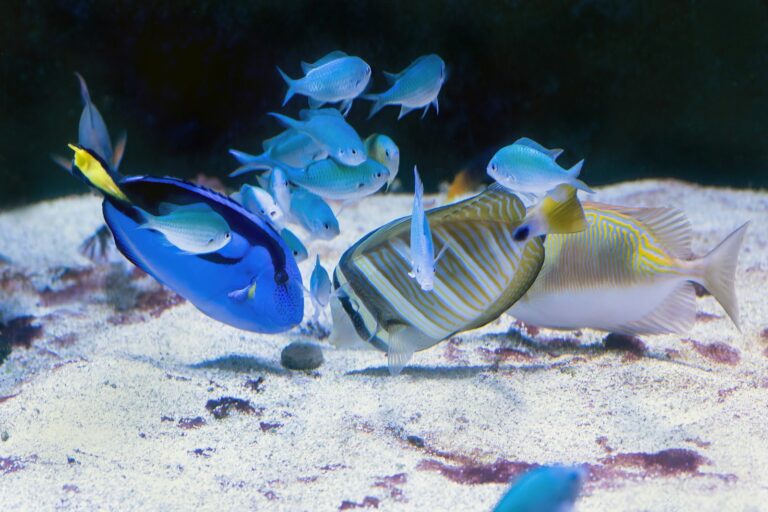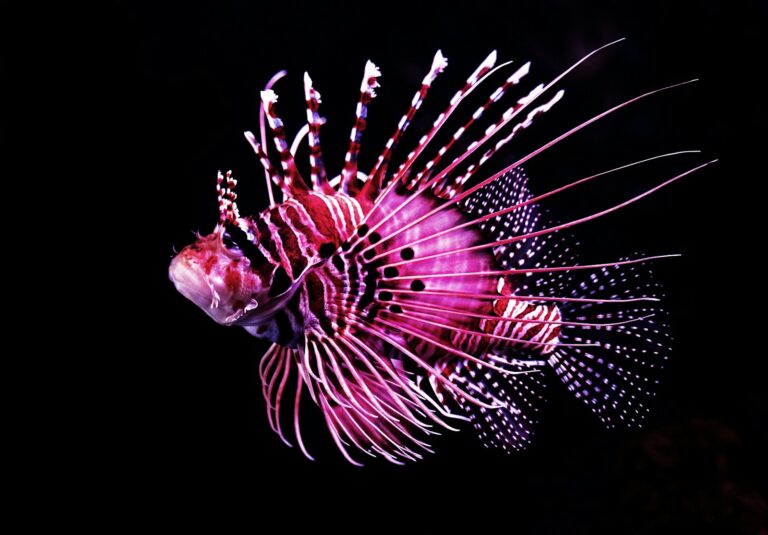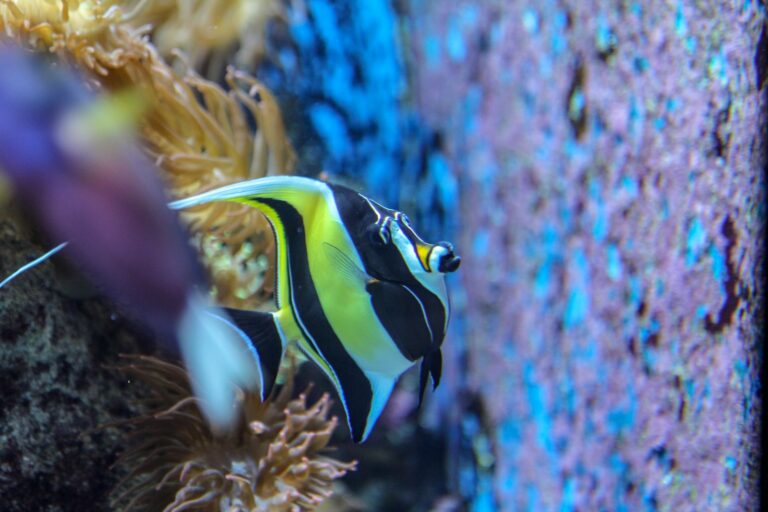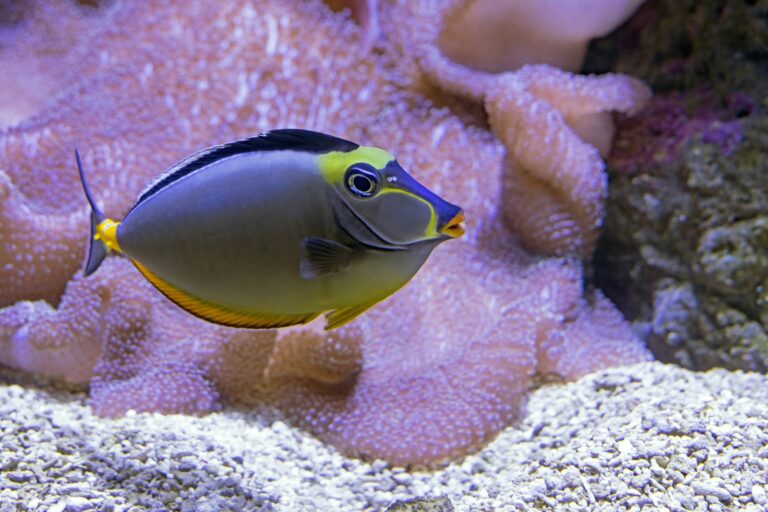Everything You Need to Know About Bamboo Sharks and Saltwater Aquariums

Bamboo sharks are captivating marine creatures that bring a touch of the extraordinary to saltwater aquariums. Their sleek bodies, nocturnal behavior, and mesmerizing movements make them a favorite among advanced aquarium hobbyists. But keeping these sharks isn’t as simple as adding them to your tank. They require a specialized setup, consistent care, and keen attention to detail to thrive in captivity.
Are you considering bringing a bamboo shark into your aquarium? This guide will equip you with everything you need to know—from their natural characteristics to tank requirements, diet, and even conservation efforts.
What Is a Bamboo Shark?
Bamboo sharks, often referred to as longtail carpet sharks, are small, bottom-dwelling saltwater sharks found primarily in the warm, shallow waters of the Indo-Pacific region. Part of the Hemiscylliidae family, these sharks are celebrated for their relatively small size compared to other shark species, making them more suitable for home aquariums when provided proper care.
>”Bamboo sharks are fascinating additions to a large home aquarium, offering a unique glimpse into marine life.” – Dr. Emily Carter, Marine Biologist
Characteristics of Bamboo Sharks
Before adding bamboo sharks to your tank, it’s crucial to understand their unique traits:
- Size: Adult bamboo sharks typically grow between 24 to 42 inches, depending on their specific species (e.g., Brownbanded or Whitespotted Bamboo Shark).
- Temperament: These sharks are mostly docile and nocturnal. During the day, they tend to rest under rock formations or in shaded areas.
- Lifespan: With proper care, bamboo sharks can live up to 10 to 15 years in captivity.
- Appearance: They have slim, elongated bodies with distinct color patterns like brown bands or spotted markings that help them blend into their natural habitats.
Bamboo sharks are relatively hardy but require specific conditions to thrive in captivity. Here’s how you can create an optimal environment for them.
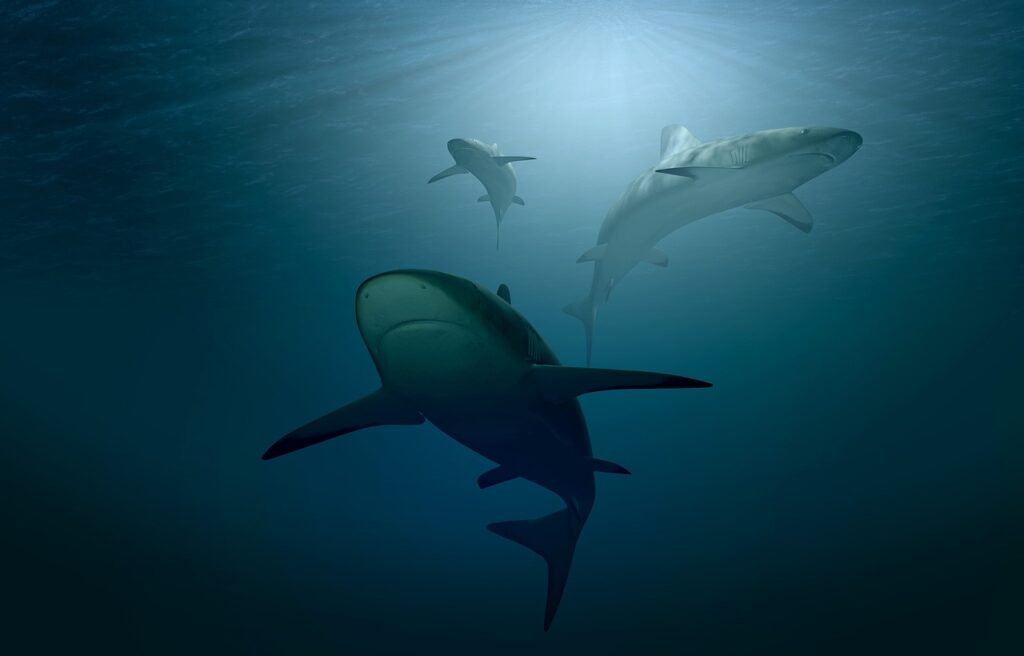
Tank Setup Requirements
Bamboo sharks need plenty of space to move and hide. If their tank setup isn’t adequate, it can lead to stress and even health decline.
Tank Size and Decorations
- Tank Size: A minimum tank size of 180 gallons is required for juvenile bamboo sharks. For adults, a 300-500 gallon tank is ideal, especially when considering their size and swimming behavior.
- Substrate: Choose fine, soft sand as bamboo sharks often rest on the tank floor. Rough substrates can damage their sensitive underbellies.
- Hiding Spots: Include caves, rock formations, or PVC pipes to provide hiding spaces and mimic their natural habitat.
>”Proper tank setup is crucial for the well-being of bamboo sharks. Replicating their natural habitat ensures their long-term health.” – John Doe, Experienced Aquarist
Water Parameters and Maintenance
Maintaining consistent water quality is critical for these sensitive sharks. Here’s a breakdown of ideal water conditions:
- Temperature: 74°F to 79°F
- Salinity: Maintain a salinity level of 1.020 to 1.025 specific gravity.
- pH Levels: Keep pH between 8.1 and 8.4.
- Filtration: A powerful filtration system is necessary to handle the biological load from bamboo sharks. Invest in protein skimmers and wet/dry filters for optimal results.
Regular water changes (20%-30% every two weeks) are essential to keep nitrate and ammonia levels low. Using a high-quality test kit is highly recommended to monitor water parameters.
>”Consistent water quality and a varied diet are key to keeping bamboo sharks healthy and thriving in captivity.” – Jane Smith, Aquarium Store Owner
Nutrition and Feeding
Proper nutrition ensures bamboo sharks remain healthy and reach their full lifespan.
Bamboo sharks are carnivores that feed on meaty foods. Here’s what to include in their diet:
- Fresh Seafood: Offer shrimp, squid, scallops, and small pieces of fish.
- Frozen or Prepared Foods: Quality frozen feeds formulated for carnivorous marine species can also provide balanced nutrition.
- Feeding Frequency: Feed bamboo sharks 2-3 times a week, ensuring you don’t overfeed as uneaten food can degrade water quality.
Feed them in the evening or at night, aligning with their natural nocturnal hunting habits. Always monitor their feeding activity to ensure they consume sufficient nutrients.
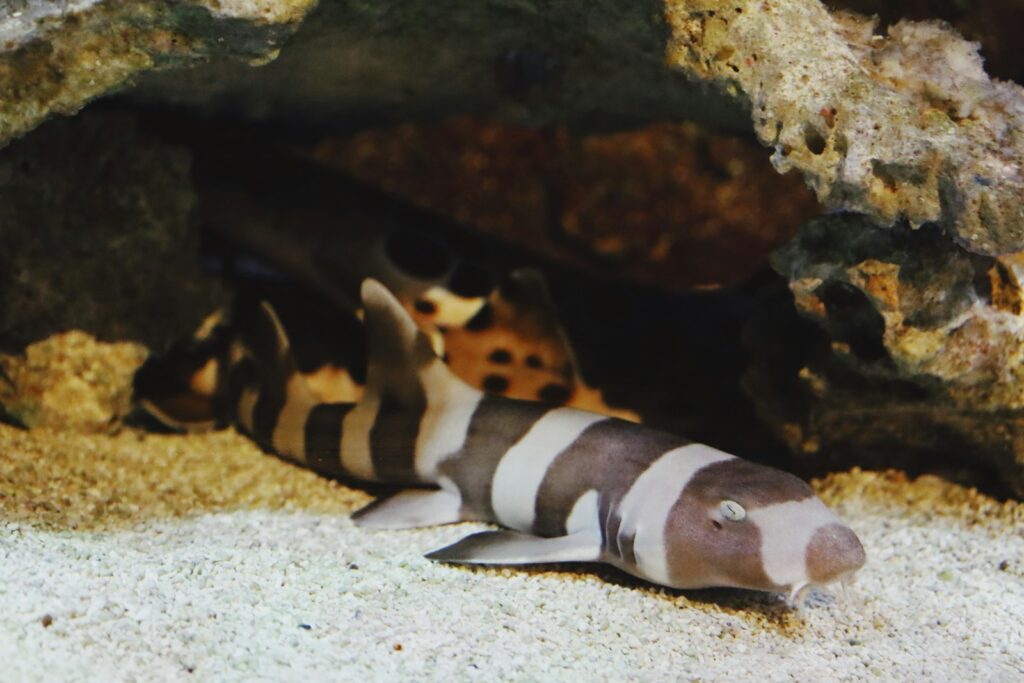
Potential Tank Mates
While bamboo sharks are docile, choosing the right tank mates is crucial to avoid stress or predatory behavior.
- Compatible Tank Mates:
- Large, non-aggressive fish (e.g., tangs, groupers).
- Marine invertebrates like snails and smaller crabs are generally safe.
- Avoid:
- Aggressive fish species that may stress the shark.
- Small fish that could be mistaken as food.
- Stingrays, as they tend to compete for food and space.
Each addition to the tank should be evaluated for compatibility with bamboo sharks.
Spotting Health Issues
Like any marine life in captivity, bamboo sharks can be prone to certain health conditions, including:
- Skin Lesions: Often caused by poor water quality or sharp objects in the tank.
- Parasitic Infestations: Regularly observe for unusual behavior or strange markings.
- Difficulty Breathing: This can indicate poor oxygen levels or ammonia spikes in the water.
Preventive care includes:
- Sticking to a strict maintenance schedule.
- Regularly testing water quality.
- Ensuring they receive a varied, nutritious diet.
Conservation Efforts
Many bamboo shark species are listed as “Near Threatened” due to habitat loss and overfishing. Supporting captive breeding programs ensures their long-term survival while reducing pressure on wild populations.
Public aquariums often lead the way in bamboo shark conservation. For example, the [Aquarium Name] in [Location] has a thriving bamboo shark exhibit, highlighting their conservation efforts. Visitors can explore how these programs contribute to species preservation.
Case Study Highlight
Jane Thompson, an experienced aquarist from Florida, has successfully kept bamboo sharks in her home aquarium for over a decade. Starting with a 180-gallon tank and upgrading over time, she shares her biggest lesson:
“Investing in the right equipment and consistently monitoring water quality saved me countless headaches. Seeing my bamboo shark grow from 14 inches to over 3 feet has been one of the most rewarding experiences of my life.”
Is a Bamboo Shark Right for Your Aquarium?
Bamboo sharks can be a stunning centerpiece of any saltwater aquarium, but they demand time, space, and dedication. If you’re ready to take on the responsibility, you’ll find their graceful movements and unique behaviors endlessly satisfying.
Want to learn more about setting up a bamboo shark aquarium? Consult your local aquarist or join a community of marine enthusiasts to get started. The ocean awaits—right in your own home.


